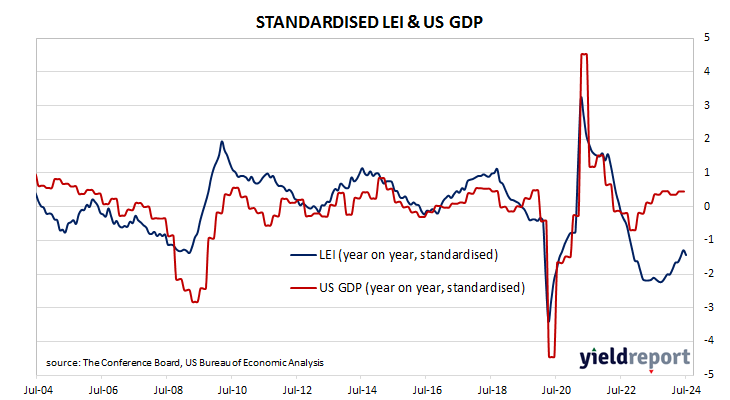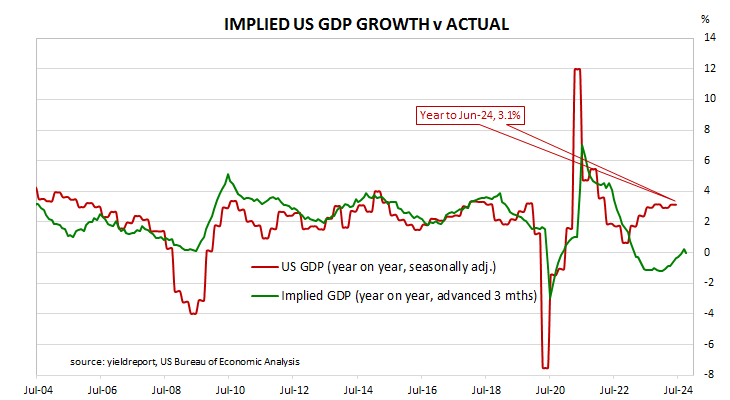Summary: Conference Board leading index down 0.6% in July, decline larger than expected; CB: six-month annual growth rate no longer signals recession ahead; short-term US Treasury yields up, longer-term yields down; rate-cut expectations largely unchanged; CB: weakness widespread among non-financial components; expects annualised growth of 0.6%, 1.0% in Q3, Q4.
The Conference Board Leading Economic Index (LEI) is a composite index composed of ten sub-indices which are thought to be sensitive to changes in the US economy. The Conference Board describes it as an index which attempts to signal growth peaks and troughs; turning points in the index have historically occurred prior to changes in aggregate economic activity. Readings from March and April of 2020 signalled “a deep US recession” while subsequent readings indicated the US economy would recover rapidly. Readings post-2022 implied US GDP growth rates would turn negative but that has not been the case so far.
The latest reading of the LEI indicates it decreased by 0.6% in July. The fall was a larger one than the 0.4% decline which had been generally expected as well as June’s 0.2% decrease.
“The LEI continues to fall on a month-over-month basis but the six-month annual growth rate no longer signals recession ahead,” said Justyna Zabinska-La Monica of The Conference Board.
Short-term US Treasury bond yields increased modestly on the day while longer-term yields declined. By the close of business, the 2-year Treasury yield had gained 2bps to 4.07% while 10-year and 30-year yields both finished 2bps lower at 3.87% and 4.12% respectively.
In terms of US Fed policy, expectations of a lower federal funds rate in the next 12 months remained largely unchanged, with around seven 25bp cuts currently factored in. At the close of business, contracts implied the effective federal funds rate would average 5.20% in September, 4.795% in November and 4.59% in December. July 2025 contracts implied 3.56%, 177bps less than the current rate.
“In July, weakness was widespread among non-financial components,” added Zabinska-La Monica. “A sharp deterioration in new orders, persistently weak consumer expectations of business conditions, and softer building permits and hours worked in manufacturing drove the decline, together with the still-negative yield spread.”
The Conference Board now expects annualised growth rates of 0.6% and 1.0% in the respective third and fourth quarters of 2024. Regression analysis suggests the latest reading implies a flat year-on-year growth rate in October, up from -0.2% for the year-to-September growth rate after revisions.



